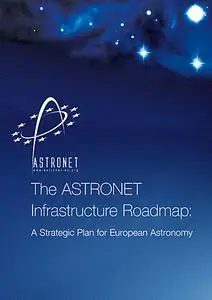The ASTRONET Infrastructure Roadmap. A Strategic Plan for European Astronomy by Michael F.; Maria J. Cruz
English | PDF | 2010 | 178 Pages | ISBN : 3923524633 | 90.15 MB
Astronomy is experiencing a golden era. Just the past few years have brought epochal discoveries that have excited people from all walks of life, from the first planets orbiting other stars to the accelerating Universe, domi- nated by the still-enigmatic dark matter and dark energy. Europe is at the forefront of all areas of contemporary astronomy. The challenge before us is to consolidate and strengthen this position for the future.
In a world of ever-fiercer global competition, European astronomy has reached its current position by learning to cooperate on a multilateral basis, especially through the European Southern Observatory (ESO) and the Eu- ropean Space Agency (ESA). However, the backbone of European astronomy remains the scientists and re- search programmes at national universities and research organisations.
The scientific challenges of the future will require an ef- fective synergy of financial and human resources all across Europe, based on a comprehensive long-term strategy and underpinned by vibrant national scientific and technological communities — in short, a true Euro- pean Research Area in astronomy. This approach is also needed for Europe to be a strong partner in the largest, global projects.
ASTRONET was created by the major European fund- ing agencies and research organisations to meet this challenge. Supported by the European Commission, ASTRONET aims to prepare long-term scientific and investment plans for European astronomy for the next 10–20 years. The Infrastructure Roadmap represents the core of this effort and is unique in the history of European astronomy, for several reasons:
Firstly, the Roadmap includes the whole of astronomy, from the remote borders of the Universe to the Solar System. Secondly, it considers observational tools on the ground and in space, covering gamma-ray to radio wavelengths as well as subatomic particles and gravi- tational waves. Thirdly, it also encompasses theory and computing, laboratory studies, and technology devel- opment. Fourthly, it recognises the power of astronomy to excite young people about the study of science and technology, and the need to train and recruit the human resources that are the sine qua non for the scientific out- come. Finally, it involves all of Europe, including the new EU member states.
Without You And Your Support We Can’t Continue
Thanks For Buying Premium From My Links For Support
Thanks For Buying Premium From My Links For Support



